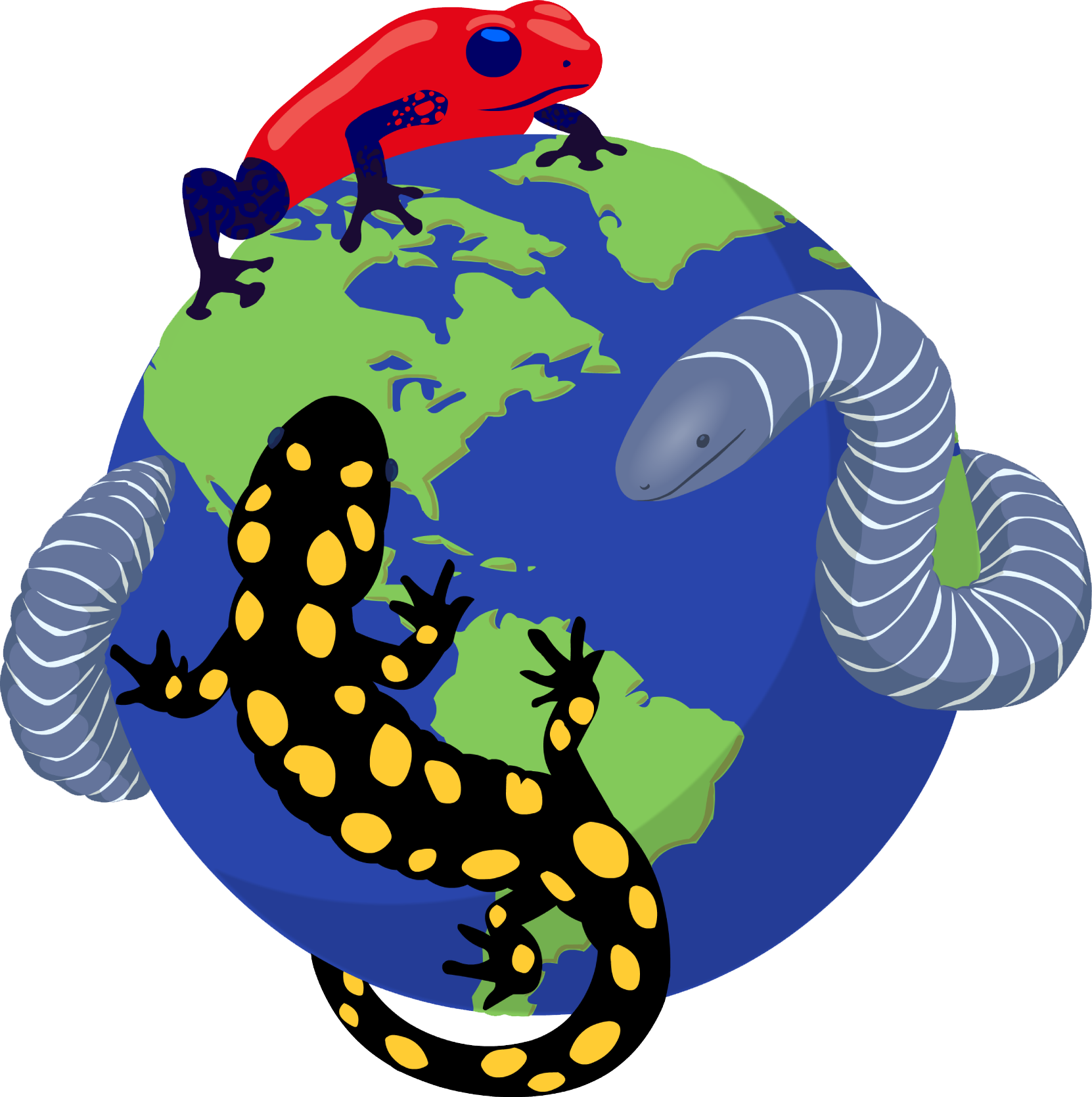|
Nymphargus lasgralarias Hutter & Guayasamin, 2012
Las Gralarias Glassfrog; Rana de cristal de Las Gralarias | family: Centrolenidae subfamily: Centroleninae genus: Nymphargus |
| Species Description: Hutter CR, Guayasamin JM 2012 A new cryptic species of glassfrog (Centrolenidae: Nymphargus) from Reserva Las Gralarias, Ecuador. Zootaxa 3257:1-21. | |
 © 2016 Laura Bravo Valencia (1 of 1) |
|
|
|
Description Similarities exist between N. lasgralarias and other species of Nymphargus. The lack of webbing between fingers I - III and either lack or have reduced webbing between fingers III and IV, in addition to males (except in N. grandisonae) lacking humeral spines, is shared among all Nymphargus. These features in N. lasgralarias place it in Nymphargus. Nymphargus lasgralarias can be distinguished easily by its uniform green dorsum. In Nymphargus a few species lack spots: N. cristinae, N. prasinus, and N. woleyi. However, N. lasgralarias is smaller than N. cristinae (male snout-vent lengths are 26.0 - 31.1 mm), has a snout that is truncate when dorsally viewed and protrudes when laterally viewed, lacks vomerine teeth, and lacks palmar supernumerary tubercles (which are small, yet plentiful in N. cristinae). Nymphargus prasinus have a round snout when viewed dorsally, have 5 - 7 teeth on each process of the vomer, and are larger than N. lasgralarias. Nymphargus wileyi has kidneys that are coated by a white peritoneum with tiny, unpigmented spots (N. lasgralarias has kidneys are only covered by a uniform white layer). Confusion between N. lasgralarias and N. buenaventura and N. griffithsi can occur. Nymphargus buenaventura however, is smaller and has a light green dorsum with warts in pale, yellow spots, while N. lasgralarias is shagreen and is homogenously green. Nymphargus lasgralarias and N. griffithsi are the most similar in appearance, but differ in their dorsal color patterns. Nymphargus griffithsi has small black spots and/or small dark melanophores and has a background iris coloration of white silver with larger and less ample spots with moderate dark reticulation. Nymphargus griffithsi is also slightly smaller (Hutter and Guayasamin 2012). In life, N. lasgralarias has a green dorsum that varies from very light to light green with small melanophores and flanks that are yellowish white. The dorsum lacks yellow spots. The tympanic membrane is translucent with coloration on the upper half only. The fingers and toes are yellow with a faint green tint. The background color of the iris is golden with several dark spots and slight reticulation (Hutter and Guayasamin 2012). In preservative, the dorsal surface of the head, body, toes, and fingers become cream to medium-dark lavender colored. The upper section of the ventral parietal peritoneum is covered by iridophores, which are white, with all other peritonea becoming translucent except for a tiny layer of iridophores that coat the heart and renal capsules (Hutter and Guayasamin 2012). There is variation in dorsal coloration between individuals in life and in preservative (Hutter and Guayasamin 2012). Distribution and Habitat Country distribution from AmphibiaWeb's database: Ecuador
Life History, Abundance, Activity, and Special Behaviors Reproduction has been observed taking place from April to July. Nymphargus lasgralarias males call from the upper sides of leaves that are located close to the stream and emit calls in a series of 1 - 4 calls with one note per call and 1 - 3 pulses per call. The calls sound like a pulsed “click” or “tick.” With typical durations of 0.0160 - 0.040 seconds and repeating 2 - 9.9 times per minute. These calls are non-modulated to weakly modulated with dominant frequencies at 3445.3 - 3962.2 Hz. It is unknown if males engage in aggressive fighting behaviors (Hutter and Guayasamin 2012). Egg clutches are deposited on the upper surfaces of leaves at the terminal margin, transitioning to hanging as the eggs fully develop. Egg clutches typically contain 12 - 36 eggs. The tadpole type is unknown (Hutter and Guayasamin 2012). Nymphargus lasgralarias occurs sympatrically with the following members of Centrolenidae: Centrolene ballux, Centrolene heloderma, Centrolene lynchi, Centrolene peristictum, Nymphargus grandisonae, and Nymphargus griffithsi. Other anuran species sympatric along the creeks include: Hyloscirtus alytolylax, Pristimantis eugeniae, Pristimantis calcarulatus, Pristimantis parvillus, and Pristimantis wnigrum (Hutter and Guayasamin 2012). Comments The species epithet, “lasgralarias” refers to the type locality of the new species found on Reserva Las Gralarias (Hutter and Guayasamin 2012).
References
Hutter, C. R., Guayasamin, J. M. (2012). "A New Cryptic Species of Glassfrog (Centrolenidae: Nymphargus) from Reserva Las Gralarias, Ecuador." Zootaxa, 3257, 1-21. [link] Originally submitted by: Bryan Hicks (2022-10-06) Description by: Bryan Hicks (updated 2022-10-06)
Distribution by: Bryan Hicks (updated 2022-10-06)
Life history by: Bryan Hicks (updated 2022-10-06)
Comments by: Bryan Hicks (updated 2022-10-06)
Edited by: Ann T. Chang (2022-10-06) Species Account Citation: AmphibiaWeb 2022 Nymphargus lasgralarias: Las Gralarias Glassfrog; Rana de cristal de Las Gralarias <https://amphibiaweb.org/species/7803> University of California, Berkeley, CA, USA. Accessed Feb 7, 2025.
Feedback or comments about this page.
Citation: AmphibiaWeb. 2025. <https://amphibiaweb.org> University of California, Berkeley, CA, USA. Accessed 7 Feb 2025. AmphibiaWeb's policy on data use. |


 Map of Life
Map of Life